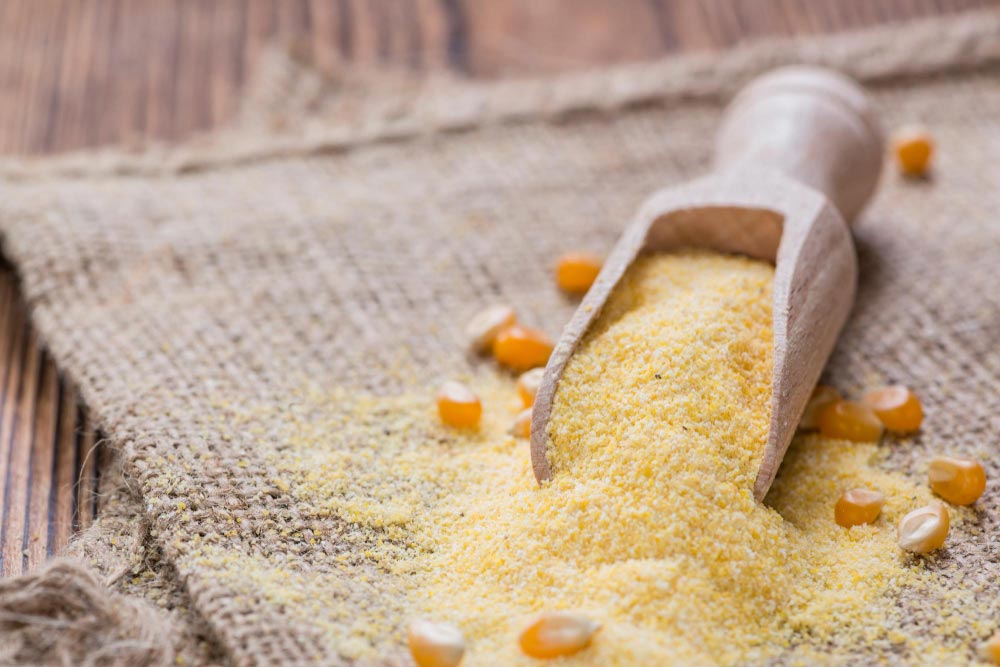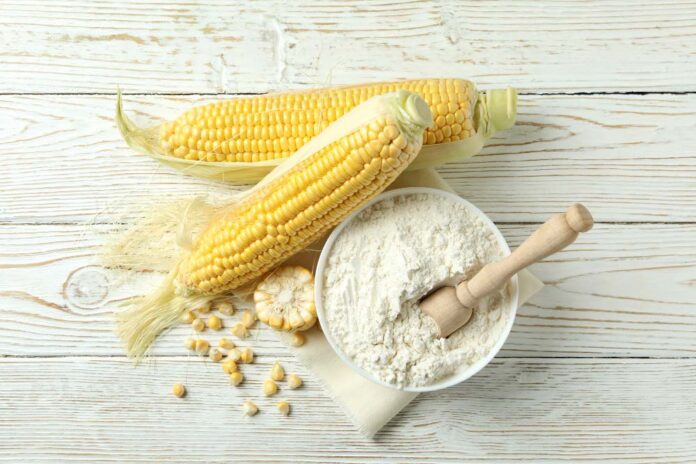Cornstarch shortage hitting hard! Have you recently found yourself scouring the aisles of your local grocery store, only to be met with empty spots where cornstarch used to sit? You’re not alone in this frustrating quest.
The cornstarch shortage has turned what used to be a simple ingredient run into a bit of a scavenger hunt. As someone who relies on cornstarch for everything from thickening sauces to perfecting my crispy fried chicken batter, I totally feel your pain.
So, let’s talk about this unexpected and somewhat baffling cornstarch shortage – what’s causing it, how it’s affecting people around the globe, and most importantly, what we can do about it. Just keep reading!
Table of Contents
Cornstarch Shortage Hits Many Countries Across the Globe
In recent times, several countries around the world have been grappling with a surprising issue – a shortage of cornstarch. This shortage isn’t just a minor hiccup; it’s a serious problem that began gaining momentum in the second quarter of 2023.
Since then, it’s been a topic of discussion among folks and experts alike. The situation is serious – think of all the recipes and industries that rely on this humble powder! From the United States to Asia and Europe, the tremors of this shortage are being felt.
In North America, particularly the US, the market saw some volatile turns. Initially, there was a spike in prices due to increased demand and moderate shortages. But then, things started to dip as demand weakened, leading to excess inventory.
Asia had its own rollercoaster, with prices shooting up mid-quarter because of production hiccups and the Ukraine war, then falling due to reduced demand. Europe, on the other hand, experienced a consistent rise in cornstarch prices due to supply-demand gaps. But what could be causing this cornstarch shortage? Let’s find out!
What is the Cause of the Recent Cornstarch Shortage?

You might be wondering, “Why the sudden shortage?” Several factors are at play here. So, let’s take a moment to look into each of these factors and how they contribute to the cornstarch shortage.
Pandemic-Induced Supply Chain Disruptions
The COVID-19 pandemic hit global supply chains hard. With lockdowns and labor shortages, the production and transportation of goods, including cornstarch, faced significant delays. This disruption extended far beyond the initial pandemic period, affecting the availability and distribution of cornstarch.
So, even though we are a couple of years after the pandemic, we can still feel its impact in this industry.
Transportation Challenges
The transport sector, particularly railroads, has been struggling. Poor conditions and inefficiencies in the transportation network have led to delays in moving cornstarch from production facilities to markets. Interestingly, cornstarch is majorly transported through railroads. This bottleneck in the supply chain has been a critical factor in the shortage.
Agricultural Setbacks
The weather has played a villain in this story. From droughts in major corn-producing regions like the US to extreme weather events affecting crop yields, the raw material for cornstarch has been in short supply. This situation is exacerbated by the increasing use of corn for ethanol production, leaving less available for cornstarch manufacturing.
Rising Global Demand
The demand for cornstarch has spiked, not just in the food industry but also in pharmaceuticals, textiles, and biofuels. This multifaceted demand puts additional pressure on the already strained supply.
Geopolitical Factors
The ongoing war in Ukraine, a significant global player in the corn market, has disrupted trade and supply lines. This conflict has had a ripple effect, affecting corn and cornstarch markets worldwide.
You may also like:
- Is Remington Arms Still in Business?
- When Does Lululemon Restock?
- Is Boost Mobile Going Out of Business?
What Do People Have to Say About the Scarcity?
Of course, people are understandably confused and a bit alarmed. Cornstarch is one of those things you just expect to find at the store.
The sudden scarcity has left many scratching their heads, wondering why something so basic is now hard to come by. Because of the role cornstarch plays in many recipes, people are beginning to hope this shortage come to an end soon.
Other Items Facing Shortages
It’s not just cornstarch that’s facing a shortage. We are also seeing similar issues with some other staples. Let’s quickly see some of them so you can be a bit calmer in the face of the cornstarch shortage because you are not alone.
#1: Sriracha Sauce
Fans of this spicy condiment have been facing a tough time. The shortage of Sriracha sauce is primarily due to a chili pepper shortage, linked to drought conditions in Mexico.
The company behind this beloved sauce, Huy Fong Foods, is grappling with this unexpected supply issue, leaving consumers wondering when they’ll get their next Sriracha fix.
#2: Cooking Oils (Soybean and Canola)
If you have noticed certain cooking oils missing from your grocery store shelves, there’s a reason for that. The shift towards biofuels is impacting the availability of these oils.
Soybean and canola oils, traditionally used in cooking, are now being increasingly utilized for biodiesel production. This new demand, coupled with bad weather affecting crops, is leading to shortages and inevitable price hikes.
#3: Wheat
The global wheat supply is under stress, significantly impacting bakery goods. Ukraine, a major wheat supplier, has faced disruptions due to the ongoing invasion by Russia.
Additionally, India’s ban on wheat exports to protect its food security has further tightened the market. This has led to rising prices and potential shortages in wheat-based products.
#4: Sugar
Here’s a sweetener that’s turning sour in terms of availability. India, a major sugar producer, has decided not to raise its sugar export quotas. Other significant producers like Brazil, Europe, Mexico, Thailand, China, and Pakistan are also experiencing low supply levels. This global scarcity is leading to concerns about a widespread sugar shortage.
#5: Canned Pet Food
Pet owners are also feeling the pinch, with shortages in dog and cat food across the country. The root causes here are the ongoing shortage of aluminum for cans and ongoing shipping issues. This has resulted in bare shelves in many pet stores and a scramble to find alternatives for our furry friends.
Cornstarch Shortage – What Other Alternatives Can You Explore?
When faced with a cornstarch shortage, it’s essential to know your alternatives. So, before we bring this post to an end, let’s talk about some cornstarch substitutes you can explore.
Each of them has unique properties that can work well in different culinary applications. They have unique properties that can work well in recipes requiring cornstarch.
All-Purpose Flour
All-purpose flour is a common kitchen staple and a great thickener that is often be used in place of cornstarch. While it doesn’t provide the same silky texture and clarity as cornstarch, it’s readily available and can be used in a 2:1 ratio (e.g., use 2 tablespoons of flour for every 1 tablespoon of cornstarch required). It’s ideal for thickening sauces, gravies, and soups.
Arrowroot Powder
This starch, derived from tropical tubers, is a fantastic substitute for cornstarch. It’s gluten-free and offers a similar texture and thickening power. Arrowroot powder is excellent for acidic dishes and freezes well, making it a good choice for fruit pie fillings and jams. It creates a glossy finish, perfect for giving a shiny appearance to sauces.
Potato Starch
Extracted from potatoes, this starch is another excellent thickener. It’s gluten-free and offers a light, airy texture, making it great for baking and frying. However, when using potato starch, you should only add it at the end of cooking, as prolonged heat can cause it to lose its thickening abilities. It’s a good choice for soups, stews, and sauces.
Rice Flour
Made from finely milled rice, this flour is a good alternative for thickening sauces, soups, and gravies. It’s especially popular in Asian cuisine. Rice flour is gluten-free and works well as a cornstarch substitute in coatings for frying, offering a crispy texture.
Tapioca Starch
Tapioca starch is a great thickener and is commonly used in gluten-free baking. Derived from the cassava root, it provides a chewy texture, making it ideal for pies, puddings, and batters. Tapioca starch is also great for dishes that require refrigeration, as it doesn’t break down easily.
FAQs
Why is Cornstarch So Expensive?
Many factors have contributed to the recent increase in the price of cornstarch. Key among these are the reduced corn crop yields, particularly in the United States, which is the world’s largest corn producer. Factors like droughts and other extreme weather conditions have also significantly impacted corn production.
Which Country Produces the Most Corn Starch?
The United States is currently the largest producer of corn starch. Cornstarch is derived from the endosperm of the corn kernel, and the U.S. leads in corn production globally. This extensive corn cultivation makes it the primary source of cornstarch production.
Can Flour Be Used Instead of Cornstarch?
Yes, flour can be used as a substitute for cornstarch, but it’s important to note the differences in their thickening power and texture. Generally, you will need to use twice as much flour as cornstarch to achieve similar thickening results.
Flour also tends to make sauces cloudier and can impart its own flavor, whereas cornstarch offers a clearer, more neutral taste. When using flour as a thickener, it’s best to cook it a bit longer to eliminate the raw flour taste.
Does Cornstarch Go Bad?
Cornstarch has a long shelf life and doesn’t really expire, but it can go bad if not stored properly. If moisture or pests get into the cornstarch, it can spoil. Spoiled cornstarch may have an off taste or color, or it might develop a sour or “funky” smell.
What Does Cornstarch Do in Fried Chicken?
In fried chicken, cornstarch plays a crucial role in achieving a crispy, crunchy coating. When mixed with all-purpose flour, it inhibits gluten formation, ensuring that the coating doesn’t become too tough or chewy.
Cornstarch also absorbs moisture (from the frying process and the chicken itself), which helps in creating a crispier exterior. It’s common to replace a portion of the flour with cornstarch in fried chicken recipes for that extra crunch.
















